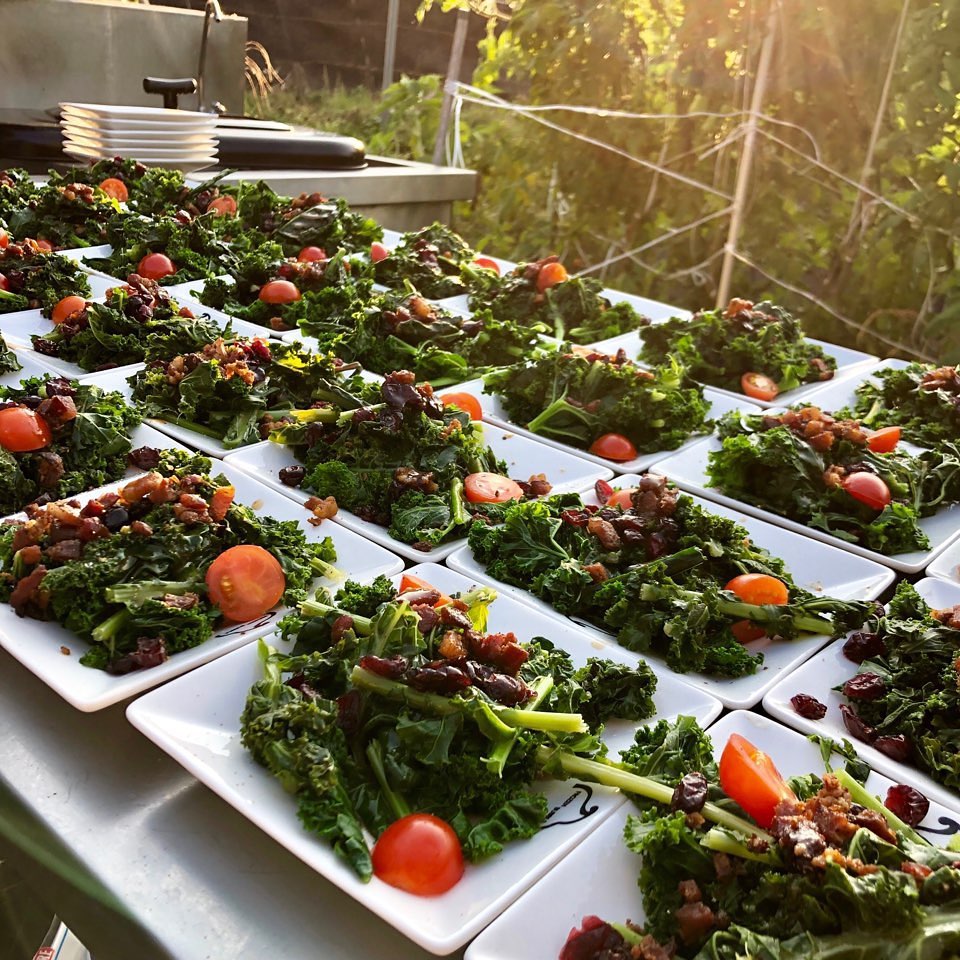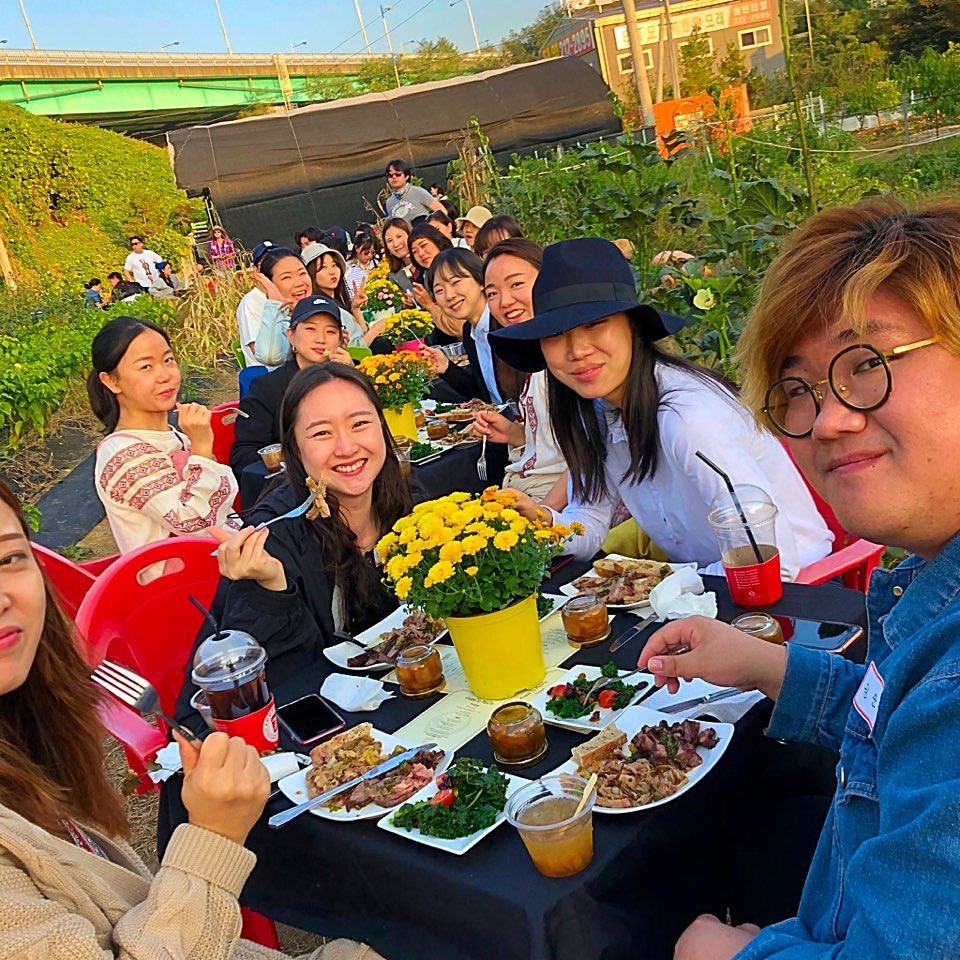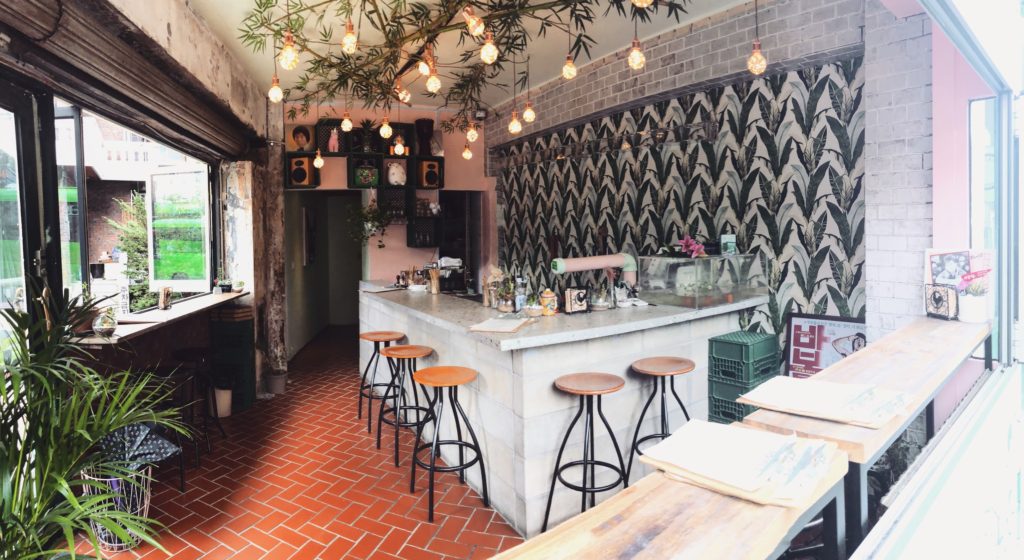Seoul is a city that is in a fascinating tension with itself. At 24 million people in the greater metropolitan area it is one of the largest cities on Earth, and it aims to be a global hub on par with cities like New York, London, Tokyo, or Hong Kong. Yet despite these global aspirations, the city is deeply homogenous — less than 3% of the population is non-Korean. For decades this was reflected in virtually every aspect of the city, but in recent years there has been a reversal of this trend, in an unexpected quarter: the city’s restaurants.
For decades the city had a fairly limited amount of non-Korean food, a situation often bemoaned by the city’s ex-pat community. Yet this situation changed recently and dramatically. “There was this wild explosion of foreign food seven or eight years ago,” says culinary instructor and restaurateur Ryan Phillips. Phillips, who also runs Bearfoot Gardens, a working farm outside of Seoul, traces this explosion to three driving forces: the increasing presence of foreign workers in Seoul choosing to stay longer, a declining Korean job market prompting talented young Koreans to pursue work in restaurants and hospitality, and an ever-increasing number of young Koreans travelling abroad.

“I think what you had about seven or eight years ago, was you had a lot of foreigners that were staying here a lot longer,” Phillips said. Many such workers started as teachers or laborers, but in the time-honored tradition of all immigrants, they found that one of the most useful things they could bring were the culinary traditions of their home countries. “Maybe because the economy in their home country wasn’t so great…and they wanted to bring more of themselves. Many had backgrounds in food, or in craft beer, or in cocktails, and they wanted to bring that here,” he said.
This surge in foreign-owned businesses was buttressed by an increase in the number of young Koreans interested in doing that kind of work. Professor Phillips, who has taught culinary classes at Suwon Food and Tourism College for many years, reports seeing anew wave of interest from Korean college graduates about the same time. “A lot of recent Korean college graduates began to have trouble finding jobs. It always worked for years past, a certain number of graduates, a certain number of jobs, you take the tests, you go work for a big company. But then that fell off.”

The confluence of foreign workers-turned-restaurateurs and young Koreans looking for new kinds of employment was a perfect match, fuelling explosive growth in the food and hospitality sector of Seoul, and focused specifically on creating or cultivating new kinds of experiences for customers.
This increased supply was met with an increase in demand as well. According to Phillips, “over the past ten years, the percentage of Koreans who have traveled abroad versus those that don’t have flip-flopped.” The number of Korean tourists traveling abroad has increased by almost 70%, just since 2014. This has largely been fuelled by rising incomes among Koreans, allowing them to spend more time and money abroad in search of novel experiences, which they then bring back with them, and often seek to replicate. “All those people that now have tried Italian food in Italy, they come back and they try their Italian restaurant again and are like ‘Oh, what’s going on?’…and so the bar is raised.”

Another restaurateur, Wendell Louie, owner of Mix and Malt restaurant and Pussyfoot Saloon, points out the importance of a fourth factor. “The reason foreign food exploded five or six years ago is logistics. The quality of ingredients and recipes depends on supply lines.” Whereas international outlets such as Costco have been present in Seoul for more than twenty years, Louie describes a major shift in the quality and reliability of foreign ingredients within the past few years. “There used to be no reliable sources, but now I have options for caviar, fresh herbs, all kinds of things,” he said. This new supply has opened up precisely the kind of authentic experience that newly well-traveled Koreans are demanding.
Of course, the question of authenticity is a tricky one. As Louie puts it, “authentic is what you grew up with,” pointing out that he has had to adapt many of his American dishes to Korean palates. Too far from the source material and a dish becomes unrecognizable, and unappealing to the more well-traveled customers that can drive demand. Too authentic, and a restaurant runs the risk of alienating the bulk of its customers. Carried too far, the pursuit of authenticity can drive a restaurant out of business entirely. “I remember in 1993, a guy opened up a Vietnamese Pho place in Hongdae. It was very, very authentic. Too authentic, really, and it failed miserably. Now, though, places are moderating the flavors, and people can say ‘This is like what I tasted in Vietnam’; it’s just more appealing.”

In fact, the surge in foreign restaurants and bars in Seoul has even led foreign restaurateurs who got their start in Seoul to begin exporting their concepts back to their home countries. Bobby Kim, one of the owners of Southside Parlor, a restaurant in the city’s famously foreigner-friendly district Itaewon, has had this experience. Southside was originally founded by Texans living in Seoul and has had enough success to spin off a second bar, named Pocket, and talks are underway to open a new bar resembling Pocket in Austin, Texas. Kim chalks up their success to adaptability. “We don’t really focus on authenticity…we just want to be right for the location we are in, we want to fit where we are. So we have to be true to ourselves… a little bit of Texas, whatever, but we also want to bring in as much Korea as we can.”
This willingness to attempt new things has proven to be very successful within the last decade. Globalized supply chains have opened up new opportunities, and foreign-inspired food has attracted a new, more widely traveled customer base. This has naturally led to a melding and amalgamation of flavors and experiences, which can itself be exported, kicking off a whole new cycle of innovation.
- Would Education Obsessed Korea Really Cut Elite Schools? - January 9, 2020
- Is Korean food going foreign? - November 12, 2019
- A Fragmented Future? Huawei and the Future of the Global Economy - June 13, 2019






